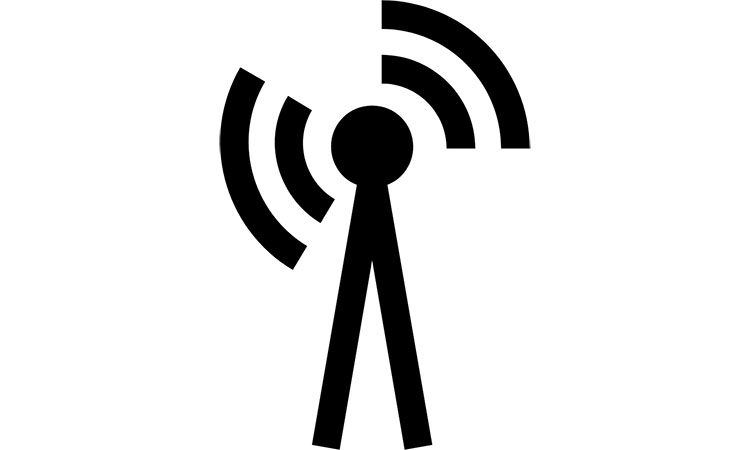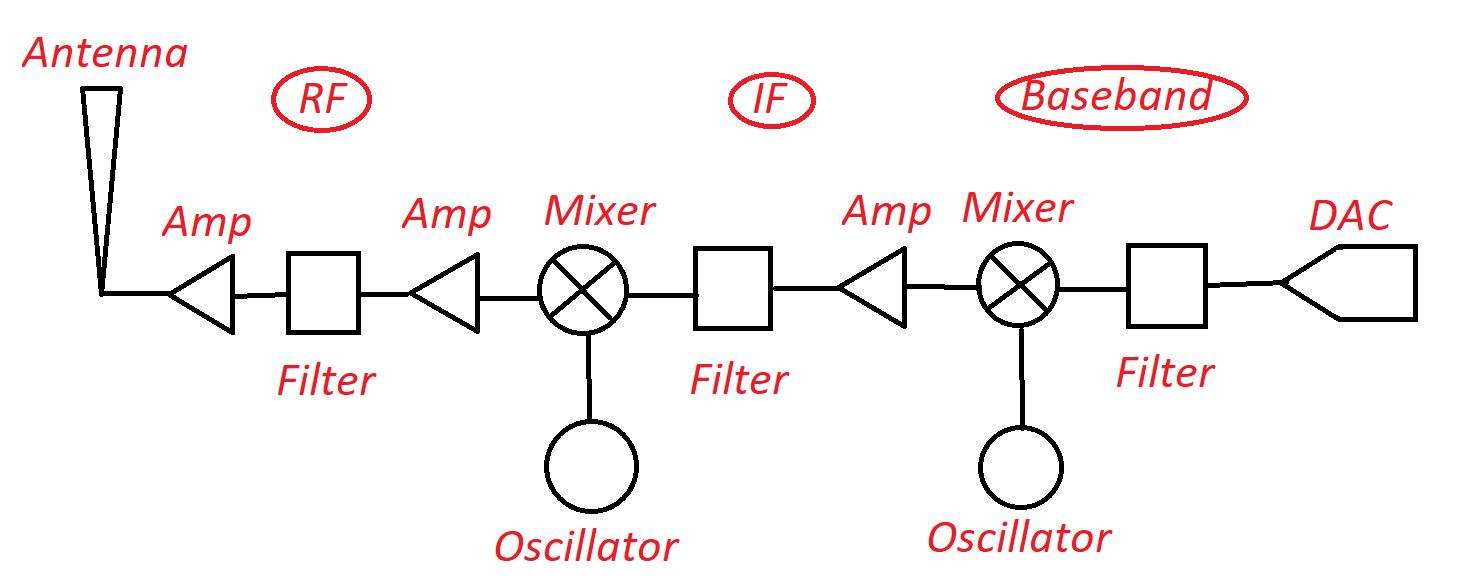WLAN radio is characterised with the following characteristics:
- sensitivity;
- selectivity;
- dynamic range;
- switch states.
At the same time radio transmitter has following requirements:
- accuracy;
- efficiency;
- spurious radiation;
- switch states.
Typically digital radio include the set of ADC an DAC converters, antennas and frequency conversion components. It makes several conversion steps:
- received frequency is being converted into intermediate frequency (IF);
- frequency conversion into baseband (after amplification and filtering).
Final signal conversion is usually performed twice in order to obtain in-phase (I) and quadrature (Q) components of the signal to keep the distinction between frequencies above and below the carrier.
Signal from antenna goes through RF selection stage, mixer is converting RF signal to IF signal, after IF selection stage mixer is converting IF signal into the baseband output. The benefits of IF are the following:
- filtering simplicity;
- easy radio design.
Typically radio consist of receiver and transmitter. Usually oscillators and filters are shared between receiver and transmitter to provide same IF for both processes. Transmitter and receiver convert I and Q signals separately to separate access to sidebands above and below career frequency. The heart of the radio is usually based on the several chips implementing MOSFETs. Another important components of radio are power amplifier, T/R (transmitter/receiver) switch, antenna switch.
Despite of different WLAN radio implementations, there is several standard functional blocks:
- ADC and DAC (converting the signal from analog to digital form);
- amplifiers (to increase signal power);
- mixers (conversion between frequencies);
- oscillators (conversion and frequency definition);
- filters (frequencies selection);
- switches.



